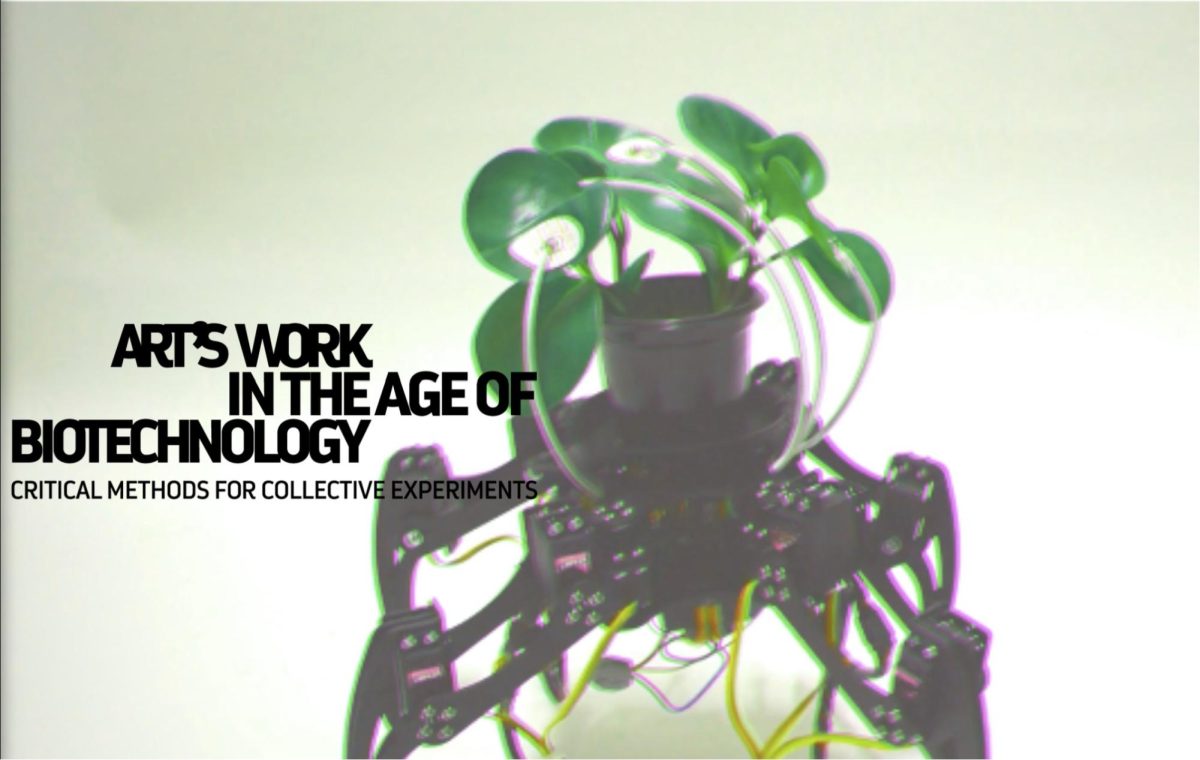15-foot tendrils of braided hair emerge from a bright orb above viewers as they tug and bend on a sculpture. The braids “listen” and respond with generative sequences of lights and sound. This interactive sculpture, one of the artworks included in Pitt’s “Art’s Work in the Age of Biotechnology,” features handmade circuitry, sound processors and machine-learning decisions.
Artist Suzanne Kite combined Oglala Lakota mythologies, ontologies and hair-braid interfaces to create Iŋyaŋ Iyé (Telling Rock) with collaborator Devin Ronneberg. It was featured in the exhibition, an online showcase featuring interactive and experimental artworks that made its public debut in 2021. The artworks blur the lines between art and science, inviting discussion about biotechnology’s place in culture and society.
While the exhibition and its programming occurred in 2021, ethical dilemmas about public participation in experimental technologies remain relevant today. Following the release of AI text generators and widespread public access to AI tools, questions of company disclosure and data usage are among rising concerns in AI ethics.
Lisa Parker, the director of the Center for Bioethics and Health Law, helped financially support and publicize the exhibit. She said the overarching themes of the exhibit invite the public to examine their role as subjects of scientific experimentation.
“What is important are the ethical questions — the ethical importance of who participates, whether we are willing participants or unwitting participants who don’t even know we are being experimented on and a part of science,” Parker said. “[The] exhibit as a whole is about participation — in science and in this collective experiment.”
Elizabeth Pitts, the director of the exhibition and assistant professor in Pitt’s Composition, Literacy, Pedagogy and Rhetoric program, said the exhibit can remind the public to question technology before it takes its final shape.
“[For] this kind of technology, it’s important to invite public participation in thinking [about] what we want from biotech and what our priorities, concerns or questions are,” Pitts said. “I think asking those questions before the shape of biotech-related applications have become finalized, [is] an opportunity to make the process of developing the technology more inclusive and more democratic.”
According to Pitts, the same concepts of questioning biotechnologies can be applied to questioning new digital computing technologies today.
“I think a lot of media coverage lends itself to an immediate freakout and panic over AI and other emerging technologies, which can and do exert a great deal of influence over the structure of our daily lives and our systems of governance,” Pitts said. “But instead of panicking, I think a sophisticated way of thinking about any kind of tech is to look back and think ‘What can we learn not only from historical examples but also from the counter narratives of artists who remind us of how we could configure things differently, and who point out the affordances and politics that can be built into technological design.’”
Kite, an Oglála Lakȟóta visual artist and assistant professor of American and Indigenous studies at Bard College, creates art that is grounded in Lakȟóta philosophy and prompts questions about new ethical AI protocols. Her development of a new cultural approach to creating ethical AI systems is rooted in the Lakota relationships with stones, which emphasizes the agency of nonhuman entities like metals and rocks.
Kite’s inspiration for “Iŋyaŋ Iyé” came from Lakhota mythology, the importance of hair in Native American culture and a vision that came to her grandfather, Bill Stover (Standing Cloud).
“The vision was of three beings who came to visit him, [each of whom] had an infinity of stars in their hair. I was already thinking about working with hair and hair braids,” Kite said. “[Hair-braid interfaces] are an interest of mine and I wanted to translate that into a sculpture.”
Kite uses AI as an access point for deeper questions about humankind. She said increased public access to AI tools since the creation of Inyan Iye (2019) contributes to the current AI discourse since they serve to amplify issues that already exist in society.
“I think that [AI] tools [were] less accessible then, [compared to] now…We should feel concerned about people stealing data and lying to us,” she said. “Because AI and machine learning are just the next tools that are oppressing people and making deeper problems very evident. It’s not AI’s fault. None of it is the tool’s fault. It is definitely the people who are benefitting from the tool in a negative way.”
Kite said the primary concern when thinking about AI ethics is labor exploitation and the means of resource extraction.
“There are human beings who run companies and make decisions every day that affect human lives and communities, and nonhuman lives and communities. And, technologies are often wielded by those people in order to retain power, consolidate power, and consolidate wealth,” Kite said. “AI is that tool currently, and we should all be deeply concerned about the way it is wielded against the most oppressed groups first. I want to be hyper aware of AI’s effects on native people and communities of color, especially on a very material level – the labor used to mine materials.”
Pitts said two years after the exhibition’s debut, she continues to draw upon the exhibition’s themes in her courses.
“By this point, I’m intimately familiar with the works having collaborated with the artists and having included them in my courses,” Pitts said. “I still look at them and learn new things from them over time. That’s the advantage of any exhibition that tries to pose questions instead of providing answers.”
A previous version of this story had missing quotes from Elizabeth Pitts. The article has been updated to reflect the additional quotes. The Pitt News regrets this error.



